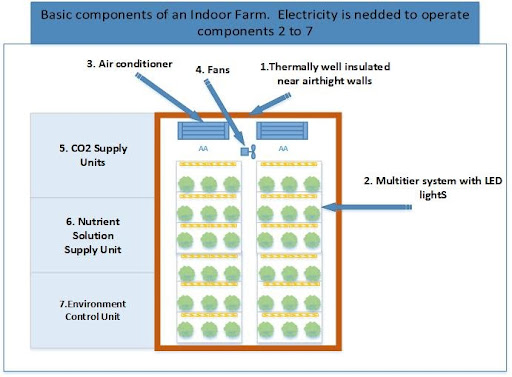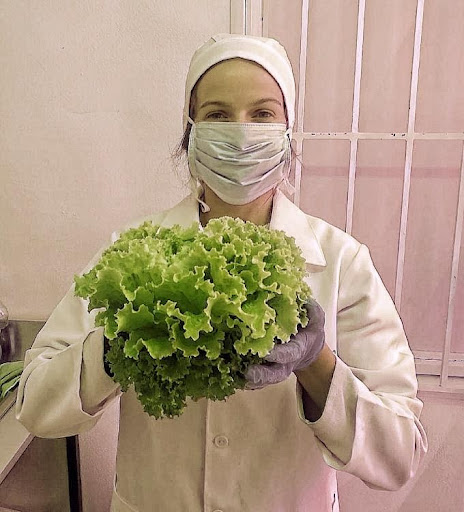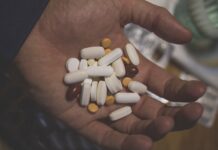“o inventamos o erramos”
“Either we invent or we err”
-Simón Rodríguez-
In a reportage last November, The Economist highlighted the emerging technologies to watch for the year 2022. Among them, vertical farming was listed as number 6th.
Vertical farming is a new kind of agriculture, based on growing plants using hydroponic, trays stacked one over others, a controlled environment, and LEDs light with different spectra to push photosynthesis. These farms are located inside the cities incorporating urban areas into agriculture. It is possible to get fresh vegetables because you can harvest in the morning and get the produce for your lunch. A second benefit is the reduction of the energy consumed in transportation, lowering the impact of food production on the environment.
Vertical farming is based on science
Vertical farming empowers us to have control over all aspects of the science of growing vegetables, since it is based on the understanding of plant biology, the effect of light on plants, photobiology, electronics, and artificial intelligence, to cope with the vast amount of data recorded and used.
After Kozai and Niu (2016), essentially seven components are necessary for an urban farm:

1.-A well-insulated room from outside weather, which permits control of the internal environment. 2.- A multilayer system with LEDs lights that improves the use of the space to grow vegetables. 3.-Air conditioners to control temperature and humidity.
4.- Fans to avoid moisture condensation on leaves surfaces.
5.-A CO2 supply units, to improve photosynthesis and plant growth.
6.- Hydroponic nutrient solution supply and control system.
7.- An environment control unit connected to the Internet, IoT.
Components 2 to 7 use electricity.
Controlling the light, environment, and nutrition of the plants permits the production of vegetables year-round, independent of the weather, season, and localization. We can grow vegetables anywhere, including the Arctic, the far side of the Moon, and on Mars when we will be able to travel and colonize it. Mars’ atmosphere is already rich in CO2, we only need to bring water for us and our plants; they will provide the Oxygen we need, as it takes place on Earth.
A successful example in South America
Far away from Mars, Biofarm is the first vertical farm in Venezuela and in South America. With the best state-of-the-art technology for hydroponic urban agriculture.
Biofarm is a technological farming company with two main products: high-quality green vegetables and climate-smart agriculture technology, also known as Agriculture 4.0— for the Fourth Industrial Revolution. This translates into a significant increase in productivity, an economy of 90% in water use, and substantial savings in the transportation of food, also a very important factor in today’s Venezuela and elsewhere.
As a result, the vegetables produced are of the highest quality, very nutritious. The closed and controlled environment prevents the presence of harmful insects, so there is no need to use chemical products to control them. The water used is filtered and treated by Reverse Osmosis, a technology that eliminates pathogenic microorganisms from the product, making the vegetables ready for consumption directly from the package with confidence.

The manufacturing process improves the appearance, nutritional quality, and taste of the vegetables by adjusting the growing conditions and the amount and type of lighting plants receive during their growth.
This technology is based on electricity; therefore, it is necessary to continuously improve the process to obtain better vegetables and increase the profit of the business. Thus, a proprietary system to choose better performer plantlets after germination and to monitor plant health during the growing process using artificial intelligence is under development at Biofarm. Also, new cultivation racks for urban farms with a superior design and better processes of the platforms to grow vegetables.

After a pilot project, Biofarm established two containers to produce green vegetables, lettuces, microgreens, and aromatic herbs. The success in handling all the aspects of this new technology made possible a new facility to increase the production capacity 10 times, with the expectation to open mid-2022.
Biofarm is the future of agriculture made present. Quoting Simón Rodríguez, “we decided to invent, since to err is not an option.”
References
- Carvalho, S. D. and K. M. Folta (2014). Environmentally Modified Organisms – Expanding Genetic Potential with Light. Critical Reviews in Plant Sciences 33(6): 486-508.
- Kozai, T. and G. Niu (2016). Chapter 4 – Plant Factory as a Resource-Efficient Closed Plant Production System. Plant Factory. San Diego, Academic Press: 69-90.






Very interesting
Thanks Diana
Enhorabuena, Diógenes
Gracias Yajaira.
Sr. Diogenes le interesa compartir experiencias conmigo?, me gustaria conocerle y que conozca alguna de mis granjas Acuaponicas en Caracas, saludos cordiales.
Hola Sr. Oliveros. Con mucho gusto, Por favor, escríbame a ,mi correo para ponernos de acuerdo. dinfante(at)agricolabiofarm.com. Saludos